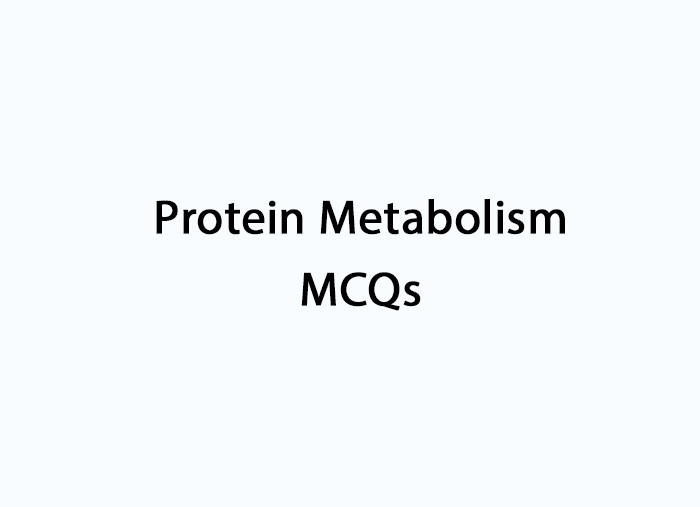- NEED HELP? CALL US NOW
- +919995411505
- [email protected]

1. Albumin is synthesized by
A) Liver
B) Kidney
C) Muscle
D) Spleen
Ans: A,
For this reason measurement of serum albumin concentration is conveniently used to asses liver function. Free fatty acids are transported combined with the albumins
2. Proteins are absorbed from GIT as
A) Amino acids
B) Peptides
C) peptones
D) All of the above
Ans: A,
Amino acids are end products if protein digestion. Glycerol and fatty acids are end products of lipid digestion. Monosaccharides (glucose, fructose and galactose) are end products of carbohydrate digestion
3. One of the following is not an amino acid
A) Glycine
B) Hydroxyproline
C) Glutamic acid
D) Choline
Ans: D
Choline is a component of phospholipidsand is involved in membrane structure and lipid transport. Its actions are:
1. Prevention of accumulation of fat in liver
2. Actively involved in one carbon metabolism
3. It is precursor for synthesis of acetylcholine
4. Which of the following amino acids is essential in infants and non essential in adults?
A) Lysine
B) Arginine
C) Leucine
D) Tryptophan
Ans: B,
Arginine is nutritionally semiessential. Synthesized at rates inadequate to support growth of children. So it has to be supplemented in diet and hence it is essential amino acid in children
5. One of the following is non essential amino acid
A) Tyrosine
B) Valine
C) Methionine
D) Cystine
Ans: A
6. Heme is converted to bilirubin mainly in
A) Kidney
B) Liver
C) Spleen
D) Bone marrow
Ans: C,
Breakdown of heme to bilirubin occurs in macrophages of the reticuloendothelial system . This occurs mainly in the spleen as well as in the liver and bone marrow.
7. The reducing end of glutathione, the amino acid i
A) Glycine
B) Leucine
C) Lycine
D) Valine
Ans: A
8. Hydroxylation of proline require the following except
A) Fe+2
B) O2
C) Ascorbic acid
D) Succinate
Ans: D
9. The enzyme involved in the conversion of glutamate to Ammonia is
A) Glutamase dehydrogenase
B) Glutamase
C) Glumase decarboxylase
D) Glutamic oxidase
Ans: A
Ammonia is produced from various sources such as bacterial flora of intestine, glutamic acid dehydrogenase, bacterial enzymes which attack food proteins etc. Liver converts ammonia into urea. The brain can also remove ammonia with the help of glutamine synthetase enzyme, where ammonia is converted to glutamine. The number of ATP from one molecule to glutamic acid is 12.
10. Ammonia in the brain is converted into
A) Urea
B) Glutamine
C) Glutamic acid
D) Creatinine
Ans: B




